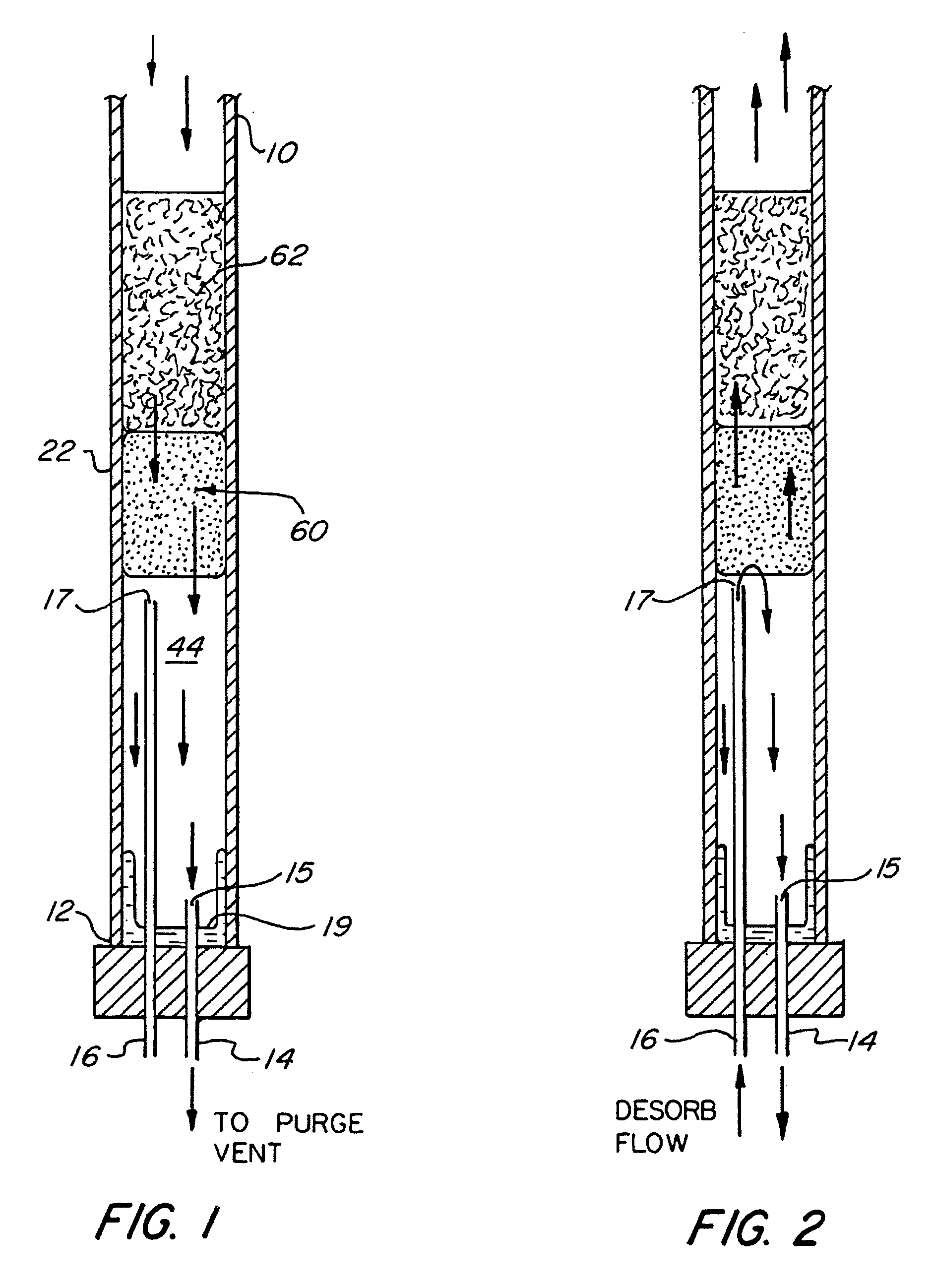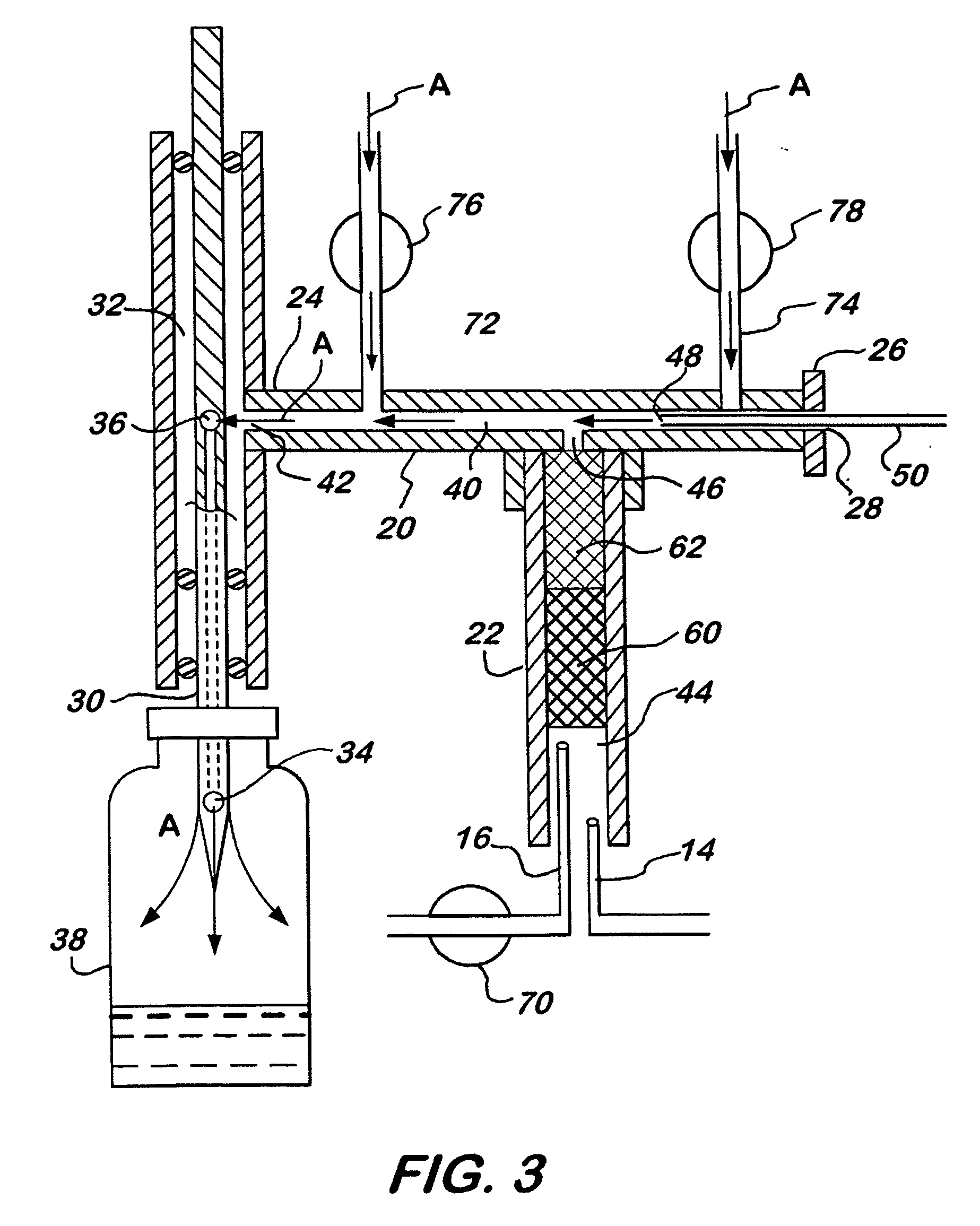Adsorbent housing with separated adsorption outflow and desorption inflow
a technology of adsorbent housing and adsorption outflow, which is applied in the direction of separation process, instrument, dispersed particle separation, etc., can solve the problems of increasing the dead-volume area and surface active site, not using extra devices and valves, and increasing cost and space. , to achieve the effect of reducing the use of extra devices
- Summary
- Abstract
- Description
- Claims
- Application Information
AI Technical Summary
Benefits of technology
Problems solved by technology
Method used
Image
Examples
Embodiment Construction
[0028] The basic components of one embodiment of an analyte pre-concentrator in accordance with the invention are illustrated in FIG. 1. As used in the description, the terms “top,”“bottom,”“above,”“below,”“over,”“under,”“above,”“beneath,”“on top,”“underneath,”“up,”“down,”“upper,”“lower,”“front,”“rear,”“back,”“forward” and “backward” refer to the objects referenced when in the orientation illustrated in the drawings, which orientation is not necessary for achieving the objects of the invention.
[0029] An adsorbent housing 22 includes a first end 10 for receiving a sample in any of a variety of ways, an example of which is further described below. The housing, which is typically a tube or liner of some sort, also has a second end 12, as well as a flow channel 44 therein. At least one adsorbent 60 is disposed in the flow channel 44 in order to adsorb the analytes in the sample as the sample fluid passes through the first end 10 and down into the flow channel 44. In certain advantageou...
PUM
 Login to view more
Login to view more Abstract
Description
Claims
Application Information
 Login to view more
Login to view more - R&D Engineer
- R&D Manager
- IP Professional
- Industry Leading Data Capabilities
- Powerful AI technology
- Patent DNA Extraction
Browse by: Latest US Patents, China's latest patents, Technical Efficacy Thesaurus, Application Domain, Technology Topic.
© 2024 PatSnap. All rights reserved.Legal|Privacy policy|Modern Slavery Act Transparency Statement|Sitemap



